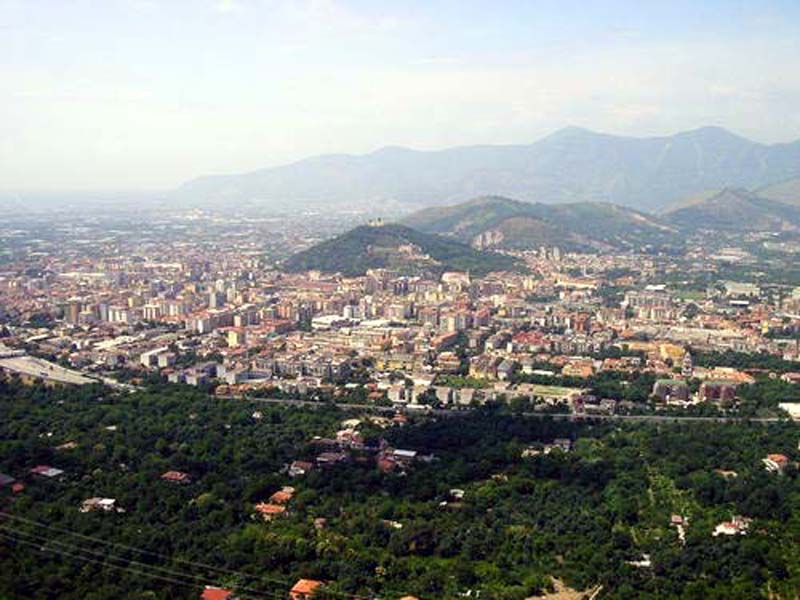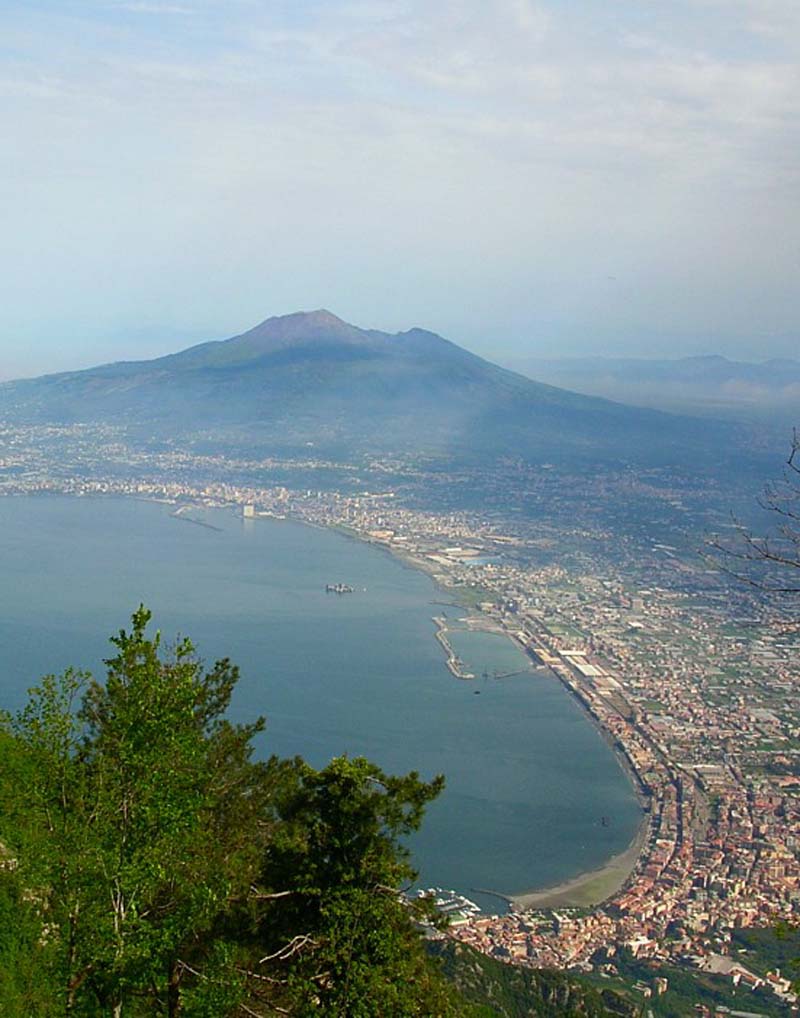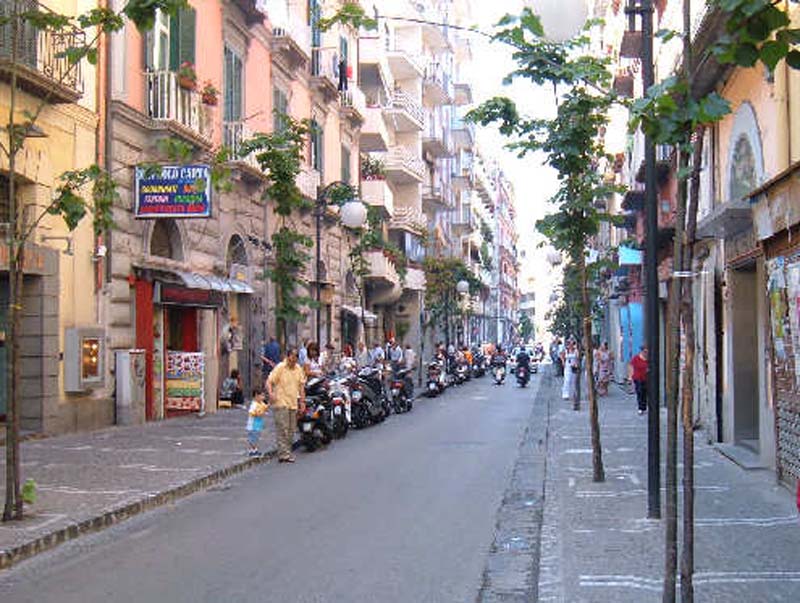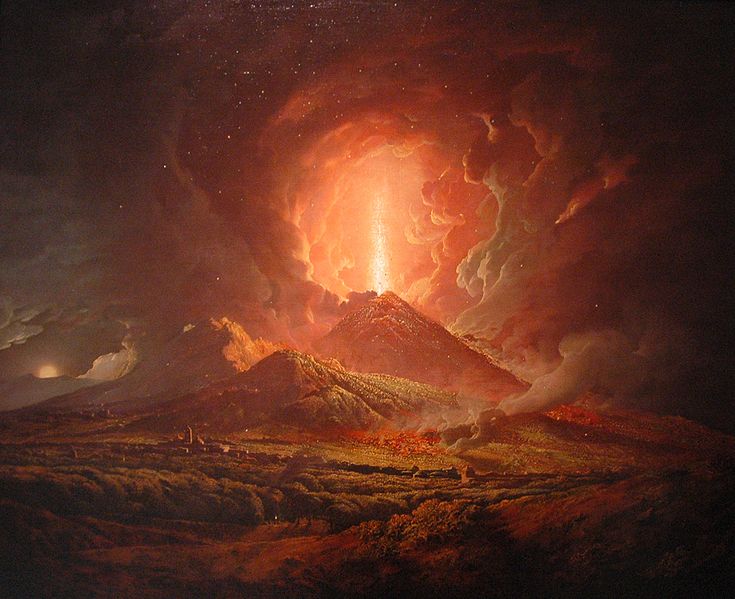Nocera Inferiore and
Castellammare di Stabia
Last update 9/22/2020

The marker shows the location in Italy for Nocera Inferiore.

A closer view of the Bay of Naples with Napoli (Naples) on the left and Castellammare di Stabia on the right, with Vesuvio (Mount Vesuvius) in the middle. The distance between Naples and Castellammare di Stabia is about 15 miles. Nocera Inferiore is 8 miles northeast of Castellammare di Stabia. Both are less than 10 miles from the volcano. Just northeast of Nocera Inferiore is the tiny village of Lanzara. Tantalizingly familiar name for a town, but very difficult to find information on. I've only just discovered this town that bears the name of our ancestors. It is actually a section in the town of Castel San Giorgio, with a current population of 1,800 people. The inhabitants are known as Lanzaresi.
Today, the tiny village of Lanzara has 46 people who bear the name Lanzara, while in Nocera Inferiore there are 128. Furthermore, there are only 3 Lanzara's and 3 Lanzaro's today in Castellammare di Stabia. The LaMura's (In Italy, it's La Mura) are everywhere. While most of them are in Gragnano, there are also LaMura's in Nocera Inferiore, Castellammare di Stabia and even Pagani (see below).
In Roman times, Nocera Inferiore was a fortified town called Nuceria Alfaturna. the name Nuceria has been thought to mean “new city”. When the Carthaginian General Hannibal crossed the Alps and invaded Rome in 216 B.C., he took a little tour down to the southern part of the empire and destroyed Nuceria Alfaturna, basically by surrounding the town and waiting until the inhabitants either starved to death or surrendered. They surrendered and the town was reduced to rubble. The inhabitants returned when peace was restored. Many years later, in 73 B.C., the slave Spartacus led his rebellion against Rome, taking the time to plunder Nuceria Alfaturna.
Centuries later, when Rome converted to Christianity, Nuceria Alfaturna became Nocera Inferiore. They didn't become Christian enough, however, because around 1490 A.D., the name was changed to Nocera di Pagani (Nocera of the Pagans), and stayed that way until 1806 when they decided they were really Christians, again. Not everyone at the time agreed, and they moved a few miles west and set up their own town of Pagans. That town still exists today. You can see it on the map as "Pagani." Interestingly, our oldest known ancestors, Carmine Lanzara and his son Diodato, were both born in Nocera Inferiore when it still had it's "Pagan" name.
Today, Nocera Inferiore is a town (comune) in the Campania region of Italy, in the province of Salerno. It lies at the foot of Monte Albino in the Sarno Valley. Less than two miles to the east is the town of Nocera Superiore. The terms "Superiore" and "Inferiore" do not mean "superior" and "inferior." Rather, they refer to the location of the towns with respect to the valley. Nocera Superiore lies at the beginning of the valley, hence "superiore", and Nocera Inferior is behind it. There are currently 46,000 inhabitants living in Nocera Inferiore.
Castellammare di Stabia, roughly translated, is "castle by the sea at Stabia." Up until August 24, 79 A.D., there was a nearby Roman city called "Stabiae", which was destroyed that day by the eruption of Mount Vesuvius, along with Pompei. The castle the city takes its name from was erected around the 9th century on a hill commanding the southern side of the Gulf of Naples. Today, about 64,000 people live there. The town's patron saint is Saint Catellus (San Catello in Italian), a 9th century bishop of the town.
Notice the town of Gragnano just east of Castellammare di Stabia. That's where some LaMura ancestors lived.

Nocera Inferiore.

Mt Vesuvius as seen from Nocera Inferiore.

Castellammare di Stabia with the Mt Vesuvius volcano in the background.

Castellammare di Stabia street scene.

While our known ancestors were living in the shadow of the volcano, their lives must have been impacted in one way or another. There were recorded eruptions in 1822, 1834, 1839, 1850, 1855, 1861, 1868, and 1872.